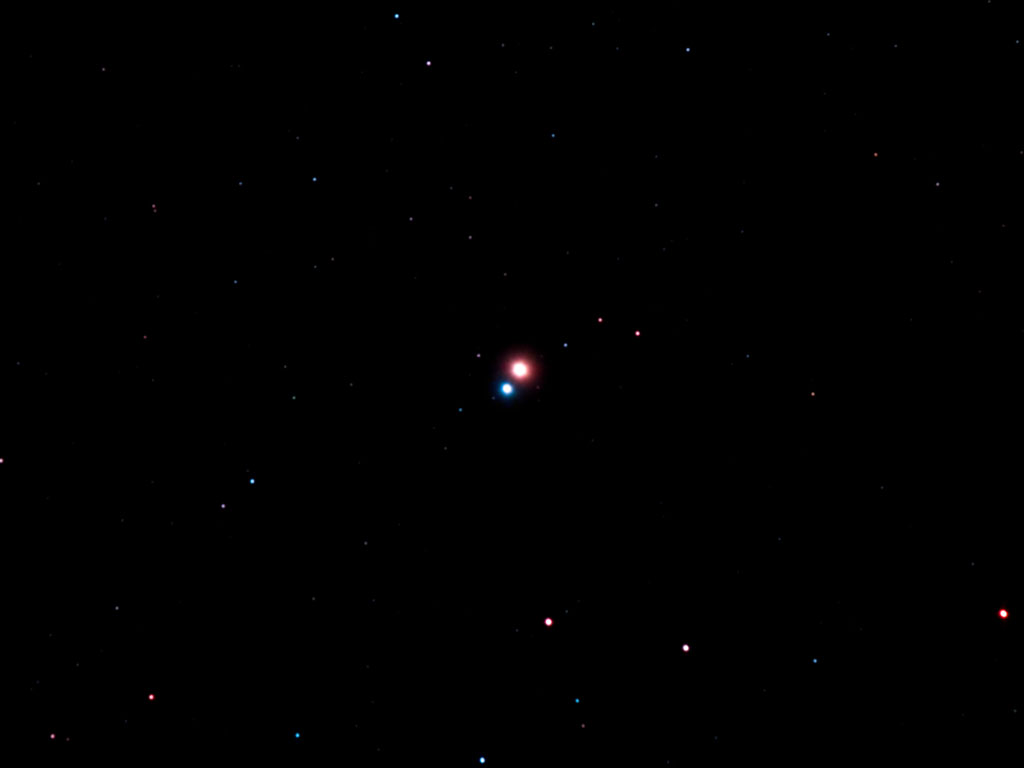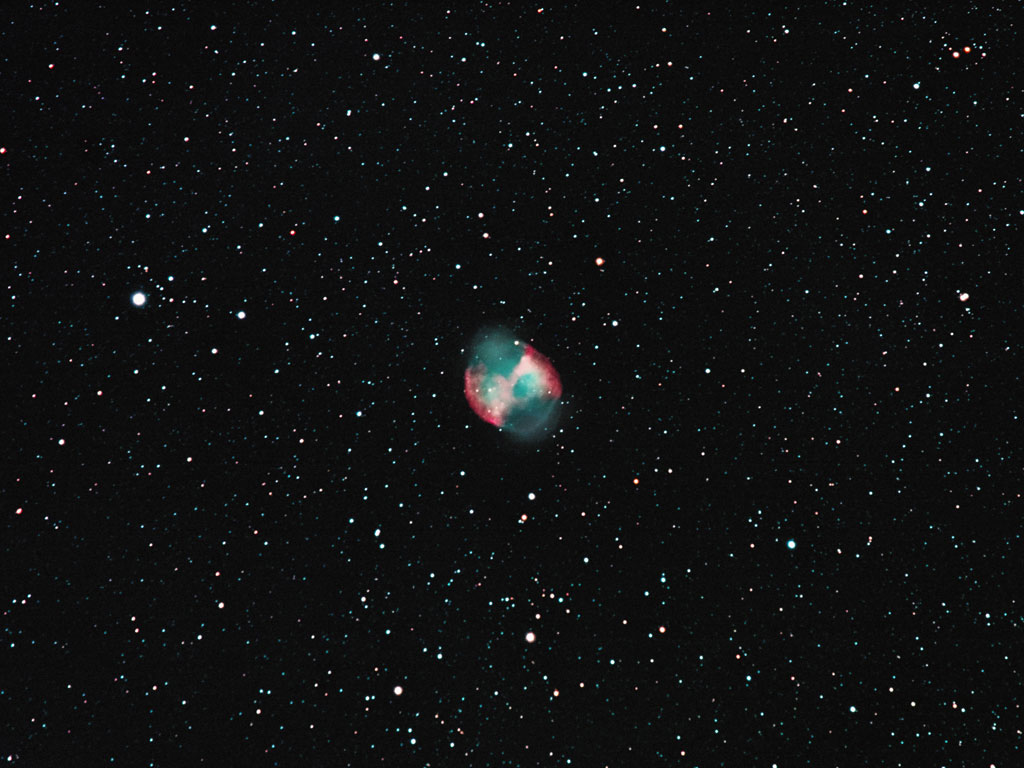The Globular Cluster M71 was formerly classified as an Open Cluster. It is now believed to be a “Loose Globular.” It is 13,000 Light Years from Earth. FSQ-106ED, STL-11000M, Luminosity only, with background colored deep blue, and a couple of stars colored, in Photoshop. |

